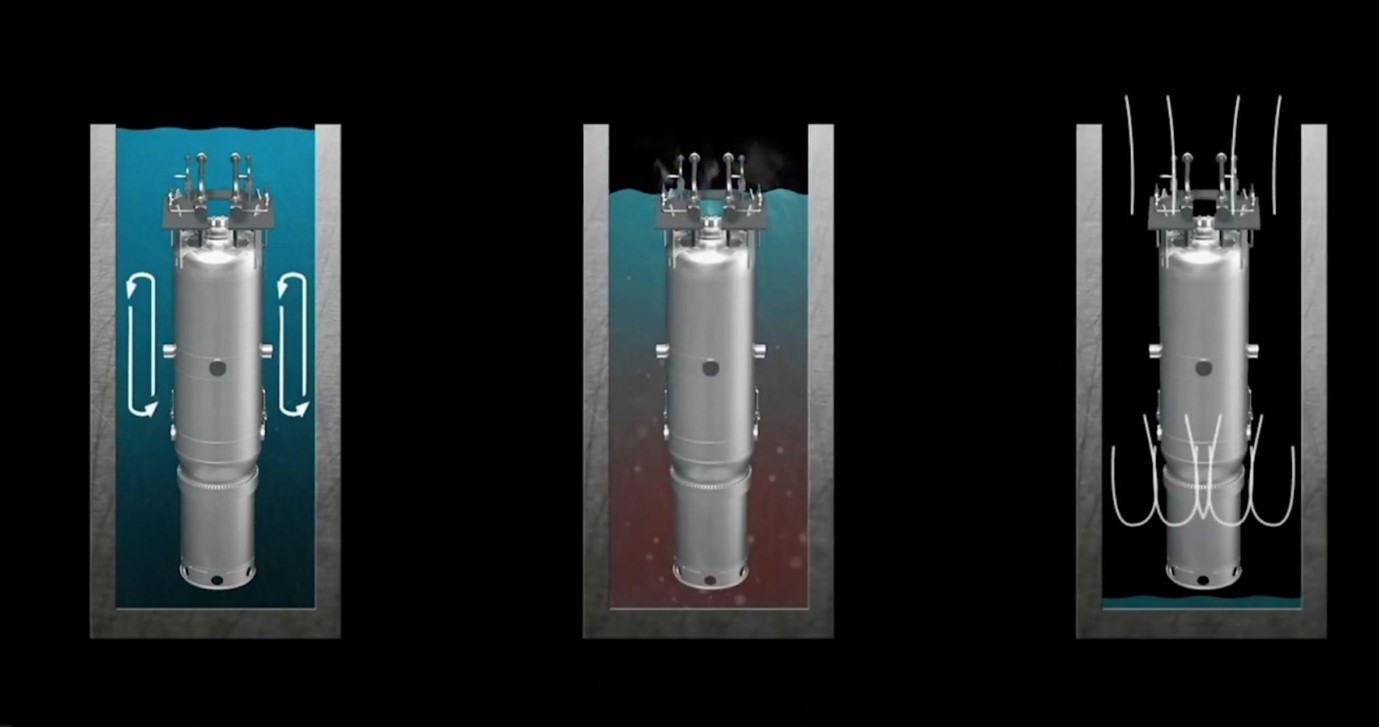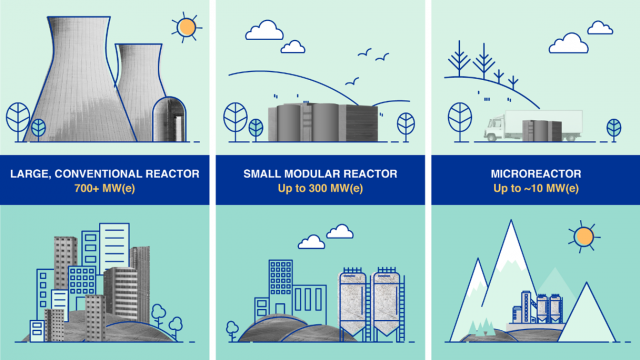Rinaldo Hunt boasts an impressive track record with more than two decades of experience with the brokerage, development, and construction of industrial assets. In the following article, Rinaldo Hunt explains the immediate need for sustainable power generation and explores the exciting potential of small modular reactors (SMR’s) as a long-term solution.
Diving into their design, operational principles, and unique advantages, Hunt addresses the challenges and concerns associated with their implementation. Rinaldo Hunt also elaborates on SMR’s transformative role in shaping a greener, more sustainable future for the world’s energy needs.
SMRs are the newest advancement in the nuclear energy space, but how can they help us to create a sustainable power source?
Individually, SMRs are much smaller and have a lower MW output than most traditional Gen 2 & 3 reactors allowing them to be far more flexible in their design and implementation. This also makes them more efficient per MWh to construct and commission. SMR’s are the green alternative to supplement weather-dependent renewables and replace carbon dependent gas and coal fired generation plants.
Rinaldo Hunt Explains SMR’s Simplicity
A small modular reactor (SMR) is a type of nuclear reactor that is designed to be both smaller in size and output compared to conventional Gen 2 & 3 reactors. The exact definition of an SMR may vary, but it generally refers to reactors with an electrical output of less than 300 megawatts (MW). Some SMRs, such as the Aurora Reactor, are even designed to generate less than ten megawatts of power.
Rinaldo Hunt explains that SMRs are typically characterized by their compact and modular design, which allows for easier construction and deployment in a variety of settings and multiples. These reactors are often constructed as self-contained units, which means they can be manufactured in factories and then easily transported to a site of installation. A current example of a factory manufactured reactor with flexible modularity and varying MW delivery is the NuScale Voygr™.
What Makes SMRs Better than Traditional Reactors?
• Modular Design
SMR’s are factory-built and give way for a very efficient and controlled supply chain that supports the fundamental modular and scalable designs. Quality assurance and best practices are easily deployed in a factory-controlled environment giving way to safe high-volume production of SMR and SMR components necessary to meet the demands of commercial scale deployment by 2032.
• Higher Safety Measures
SMRs often incorporate advanced fail-safe features. For example, some SMRs use passive cooling systems that utilize natural processes like circulation, convection, gravity, and pressure, as opposed to active systems typically seen on Gen 2 & 3 reactors that require external power sources and computer or SCADA controlled trips to initiate shutdowns.
Unlike larger reactors, SMR’s can be designed to self-moderate the shutdown process and operate unattached from the internet providing cyber-resilience. SMR’s provide operational and risk profiles much less intensive than traditional carbon reliant and hydro plants in operation today.
• Access to Clean Electricity in Remote Areas
Rinaldo Hunt notes that SMRs can be installed easily without much need for grid capacity, meaning they can provide a clean and reliable source of electricity to off-grid communities or those that previously used unreliable power sources, such as diesel generators, for their electricity needs.
 • Supplementing Renewables
• Supplementing Renewables
SMRs can be used to supplement the electricity provided by unreliable weather dependent renewable energy sources, such as wind or solar. Traditionally, renewables have used battery storage to supplement power production when the weather does not provide the opportunity to produce electrons, but batteries are carbon intensive to produce and increase the renewables CO2e. However, SMR’s run 24/7 and offer a carbon free opportunity to either provide baseload power or supplement renewable sources regardless of weather or time of day!
• Greener Energy Footprint
Two types of fuel can be used to power an SMR depending on the design and manufacturer specification. HALEU and LEU are both enriched uranium resources that provide consistent and carbon free energy production. On average, the waste from a reactor supplying a person’s electricity needs for a year would be about the size of a brick. Only 5 grams of this is high-level waste – about the same weight as a sheet of paper*. Most SMR’s have an engineered life that surpasses solar and wind facilities by more than 3.5 times and the footprint to build an SMR is less than 50 times that of a solar field or wind farm with the same output capacity. As the supply chain efficiencies are perfected and fuel recycling methods become more advanced, SMR’s will become the industry standard as the true carbon free energy resource.
Conclusion
In the quest for a sustainable and resilient energy future, SMRs have emerged as a compelling solution with the potential to revolutionize power generation. From enhanced safety features and reduced environmental impact to their scalability and versatility, SMRs embody a new era of energy generation that aligns with the global goals of mitigating climate change and promoting a cleaner environment by 2050. Their compact size and modular design enable easier deployment while providing opportunities for localized energy production, making them suitable for a wide range of settings and energy demands.
While challenges and concerns still exist in the development and implementation of small modular reactors, their potential benefits far outweigh the risks. As technology continues to advance and we address regulatory and public acceptance obstacles, SMRs have the capacity to contribute significantly to the diversification of our energy mix, reduce our reliance on fossil fuels, and promote a sustainable green future.








